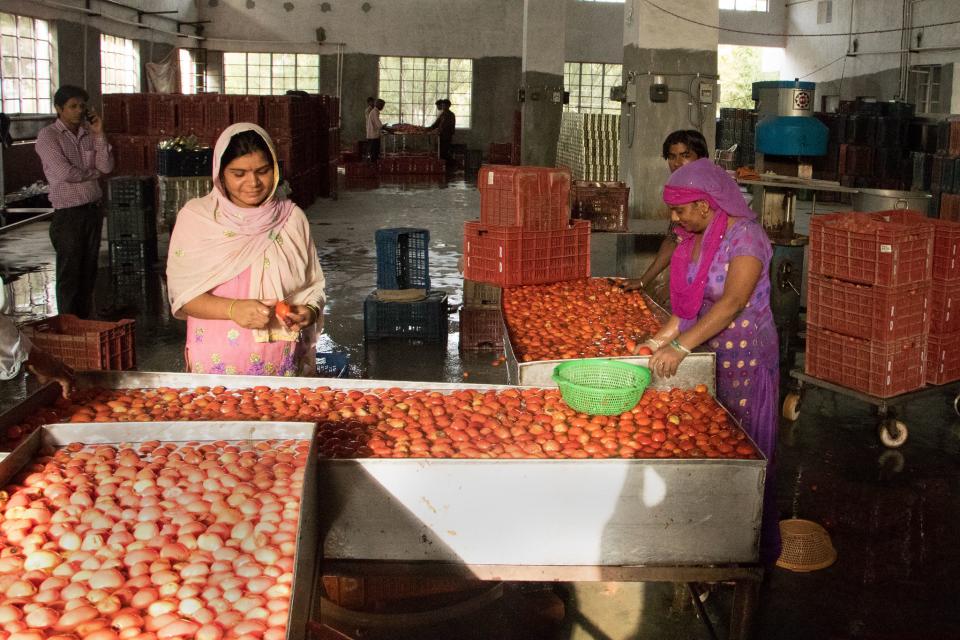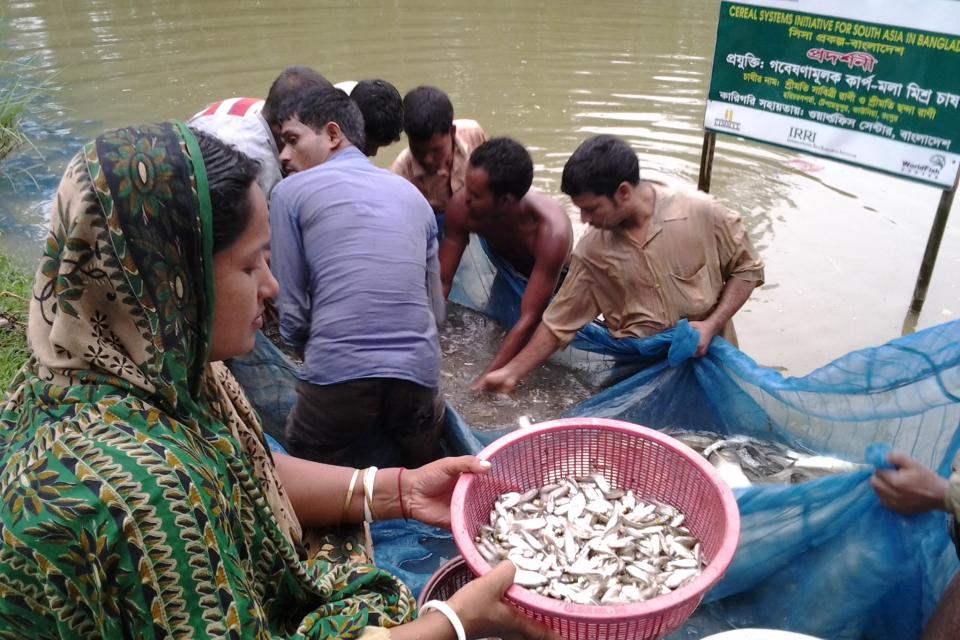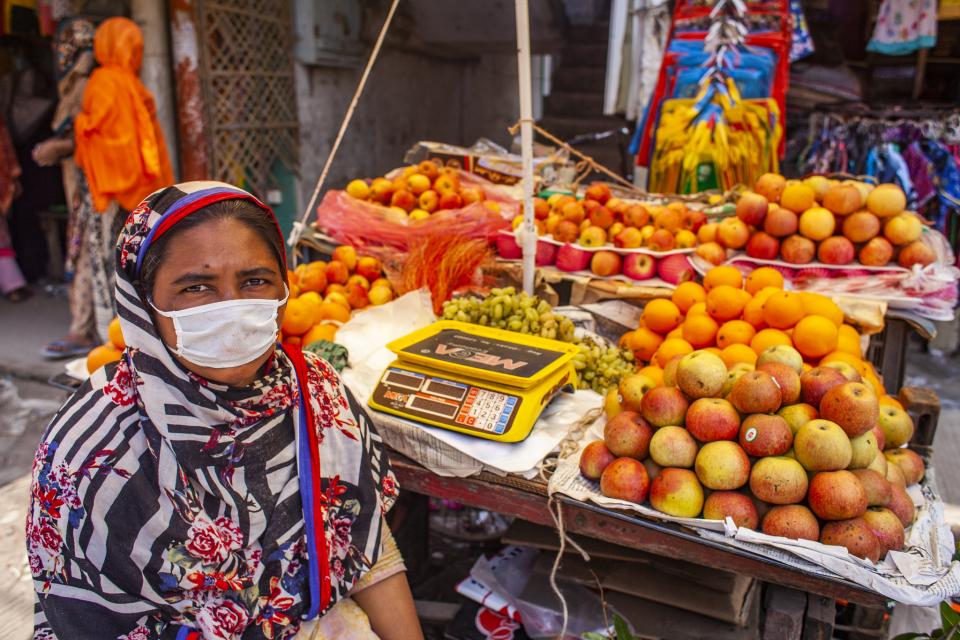Abbreviated women’s empowerment in agriculture index (A-WEAI)
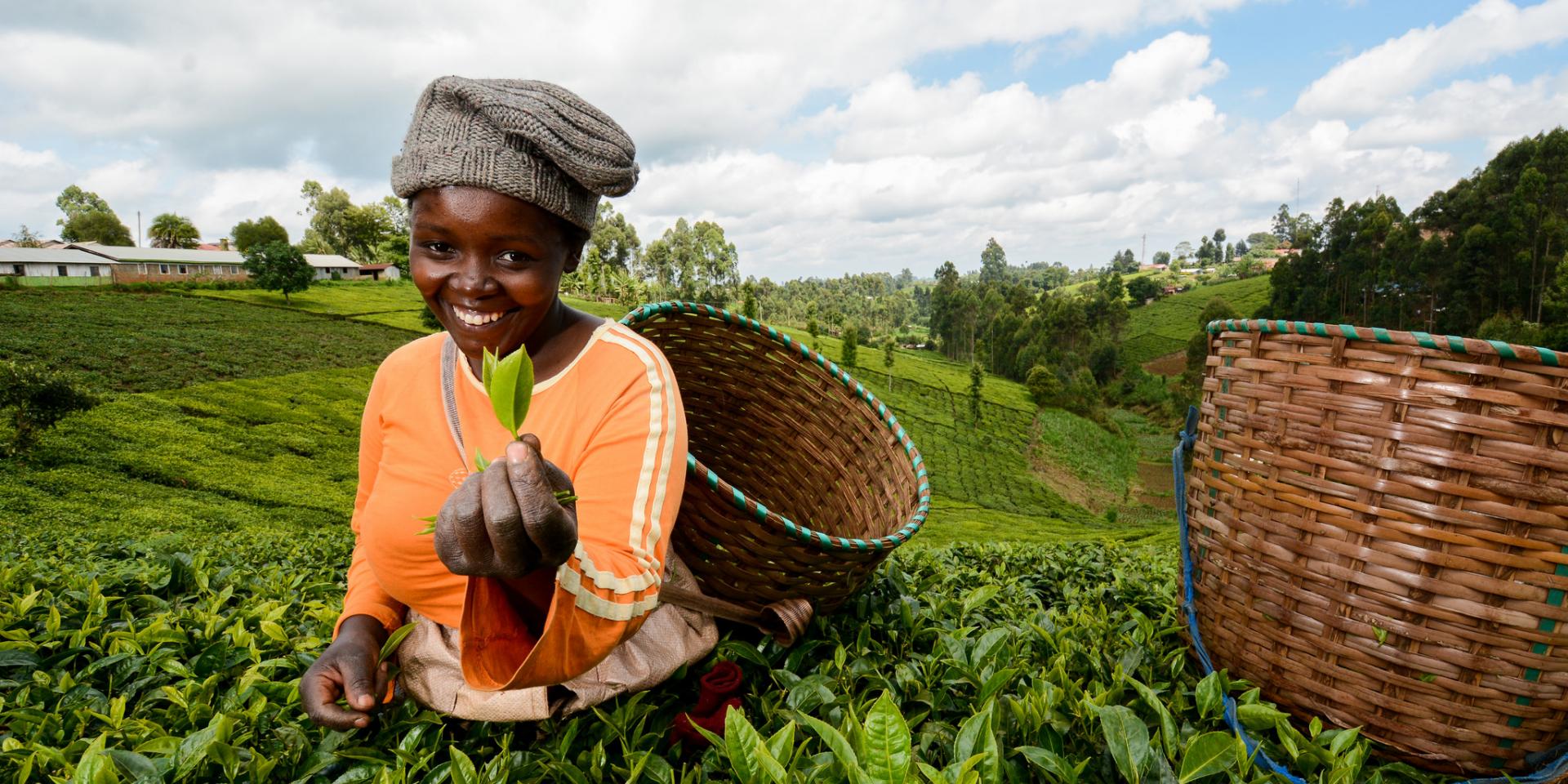 Photo: G Smith/CIAT
Photo: G Smith/CIAT
Measuring women's empowerment in the agricultural sector for population-level monitoring.
Why is the method important?
Abbreviated WEAI (A-WEAI) builds on the original WEAI ; it shortens interview length and modifies questions that were difficult to implement in the field, while maintaining cross-cultural applicability.
Who is the method for?
A-WEAI is primarily designed to be used by researchers and academics. Donors, practioners and policy makers can also benefit from the A-WEAI.
The tool was first piloted in Uganda and Bangladesh but can be applied worldwide.
How can I use the tool?
The A-WEAI is a shortened version of the WEAI adapted for population-based surveys.
The A-WEAI retains the five domains of empowerment (production, resources, income, leadership and time), but consists of only six composite indicators (input in productive decisions, ownership of assets, access to and decisions on credit, control over use of income, group membership and workload), with weights for each indicator adjusted accordingly. The A-WEAI includes a simplified 24-hour recall time module that collects information only on primary activities, and streamlined sections on production decisions and resources. The total A-WEAI module also takes approximately 30 percent less time to administer than the original WEAI.
When and how was it developed?
After the development of the WEAI and the Feed the Future baseline surveys, and based on feedback from a learning event held at the International Food Policy Research Institute (IFPRI) in November 2013, the WEAI was revised and IFPRI researchers developed the abbreviated WEAI (A-WEAI).
Where can I get the method? Who can I contact?
A-WEAI is available here or click on WEAI Resource Center.
Contact: IFPRI-WEAI@cgiar.org.
Tools, methods, manuals
Publications
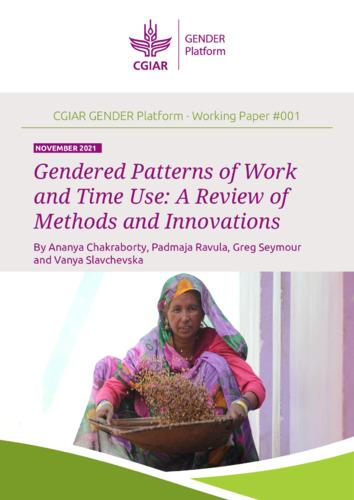
Gendered patterns of work and time use: A review of methods and innovations. CGIAR GENDER Platform working paper 001.
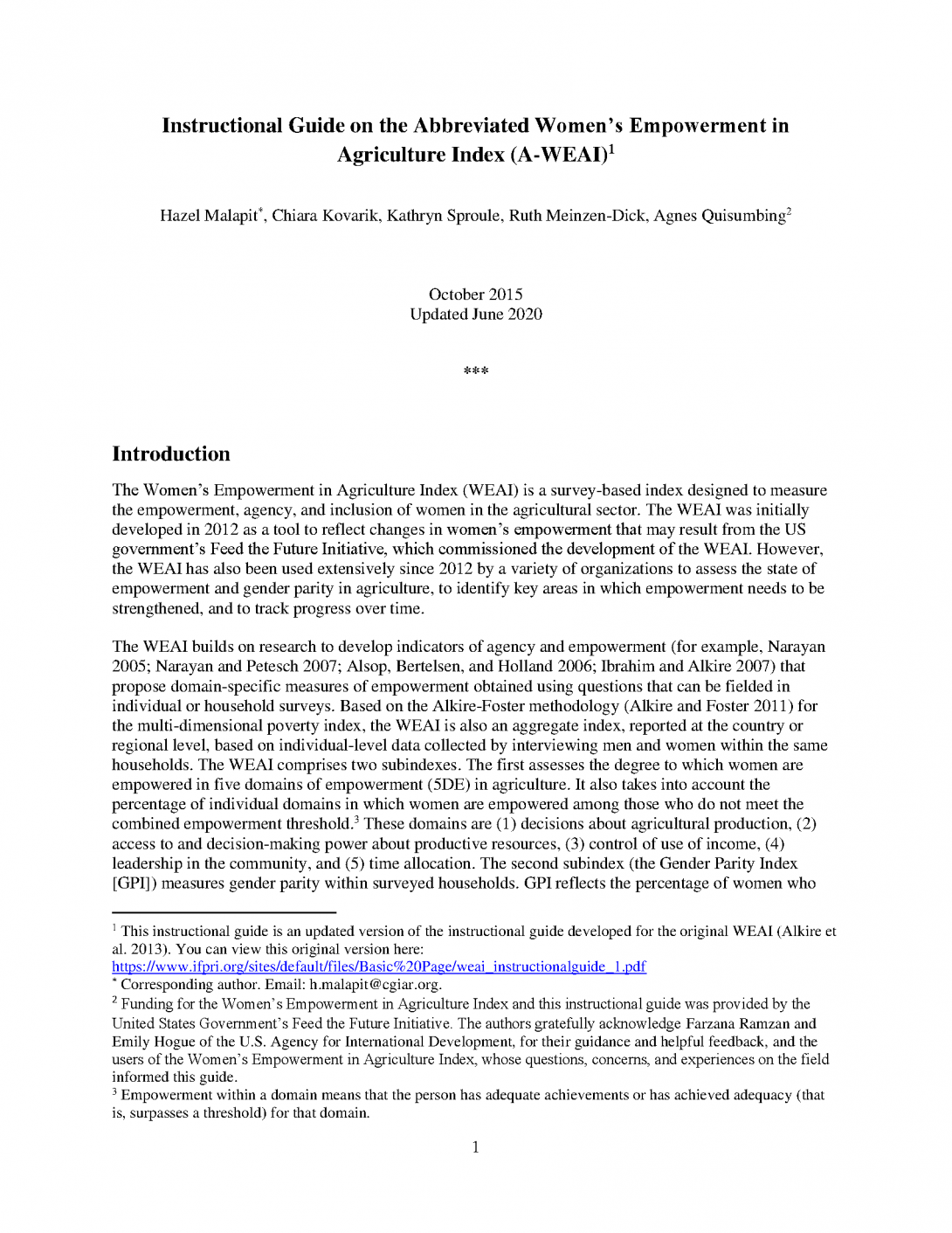
The Abbreviated Women’s Empowerment in Agriculture Index (A-WEAI)
Malapit, Hazel J.; Kovarik, Chiara; Sproule, Kathryn; Meinzen-Dick, Ruth Suseela; and Quisumbing, Agnes R. 2020. Instructional guide on the abbreviated Women’s Empowerment in Agriculture Index (A-WEAI). Washington, D.C.: International Food Policy Research Institute (IFPRI). http://ebrary.ifpri.org/cdm/ref/collection/p15738coll2/id/129719
